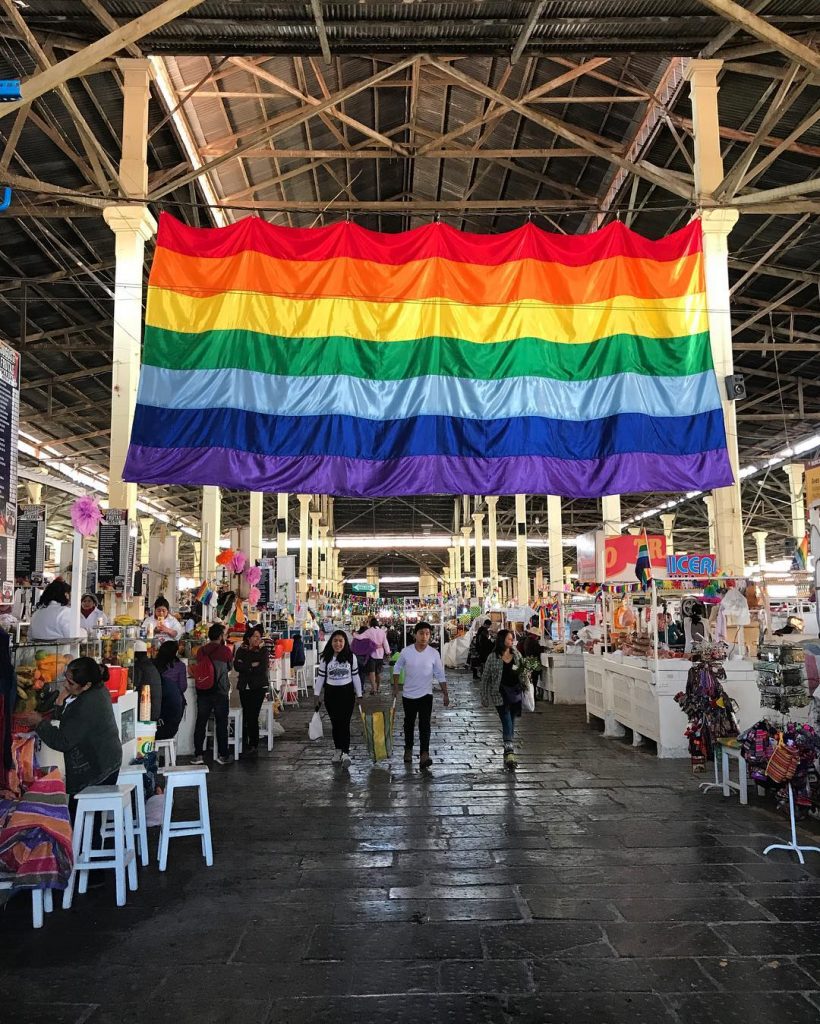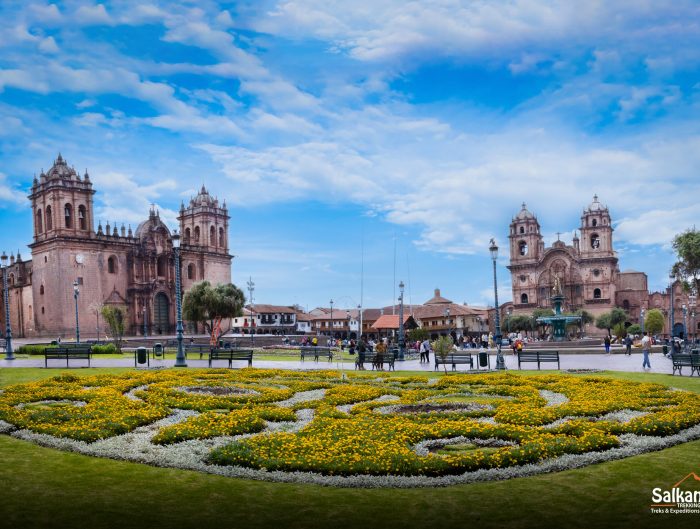We’re sure that most of you thought of three things as soon as you got to Cusco. You felt a powerful energy, you suffered from the altitude and the flag surprised you. Are we right?
The flag of Cusco has 7 horizontal stripes with all the colors of the rainbow: red, orange, yellow, green, indigo, blue and purple. This makes many tourists confuse this flag with LGTBIQ+ community flag which represents the fight of the lesbians, gays, transexuals, bisexuals, intersexuals and a long etc.
At first glance, it’s difficult to discern between the two, but we want to teach you an excellent tip to help you know which is which without much analysis. The main difference is the light blue stripe on the Cusquenian flag. This means that the Cusco flag has 7 colors, and the flag of the LGTBIQ+ movement has 6. Now you’re an expert in differentiating between them!
How did the Cusco flag come about?
Maybe you’ve heard some Cusquenians say that the multicolored flag is the flag of Tawantinsuyu, meaning it came from the very Inca Empire. However, that is a lie. There’s no historical evidence to prove that claim. On top of that, according to specialists and historians, the concept of a “flag” was imported from Europe. So the Incas didn’t even have the custom of representing a nation or social group with a flag. About this, the most important historian in Peru, Maria Rostworowski, emphatically affirmed that this flag didn’t exist then and was never used by the Incas.
Tawantinsuyu’s flag? Wiphala?
What is true is that since 1948, there’s been a radio station in Cusco called “Tawantinsuyu” that plays popular traditional music and was funded by Mr. Raúl Montesinos Espejo. This man was who presented the “flag of the Incas” in the 25th anniversary of his radio station. This design of 7 horizontal stripes captivated the people after being carried in a procession to the Plaza de Armas. This great flag was made with the sponsorship of the beer factory Cervesur.
Many tell the story that, in creating its design, Mr. Raúl Montesinos was inspired by the wiphala, an Aymara banner of seven colors created in Bolivia in 1945 for the First Indigenist Congress. Unlike the flag of Cusco, a checkered design characterizes the wiphala. The fact that the owner of Radio Tawantinsuyu spent part of his childhood in Bolivia reaffirms this theory.
Little by little, Raúl Montesinos’ design grew in popularity over the whole city and is linked to the ancient Tawantinsuyu by many. Because of this, after 5 years in 1978, Julio Gilberto Muñiz Caparó, mayor of the Municipality of Cusco declared official this flag without having presented any type of studies to back up his decision.
This flag has been accepted also, until this day, by diverse indigenous groups in countries like Ecuador and Bolivia and entered forcefully in diverse traditional practices.
Coincidentally, that same year in the United States, Gilbert Baker created a flag to symbolize the fight for equality of rights for the non-heterosexual community.
An attempt to change it?
After controversies due to its similarity to the LGBTIQ+ flag and its lack of historical backing, in 2007, the Municipality of Cusco called a forum named “Validity of the flag of Cusco” which received opinions of various intellectuals. The conclusion of this meeting was a recommendation to change the design of the flag. In that moment, the Municipality announced that they would hold a public consultation to decide on the change. However, until now, no one has heard any more news about the issue.
Really, the Cusco flag has widespread approval from its citizens. The whole city is filled with its colors during the month of June when the main festivals of the Historical Capital of Peru are celebrated.


















Leave A Reply